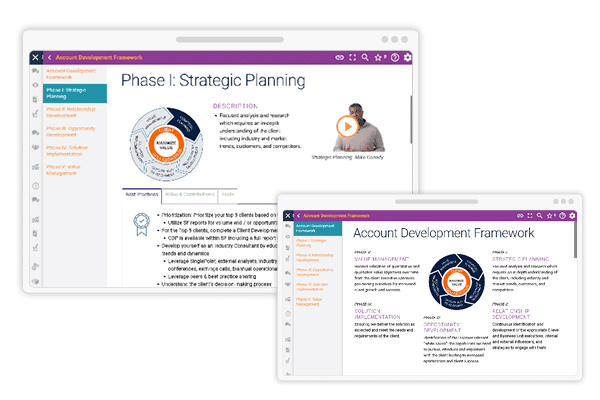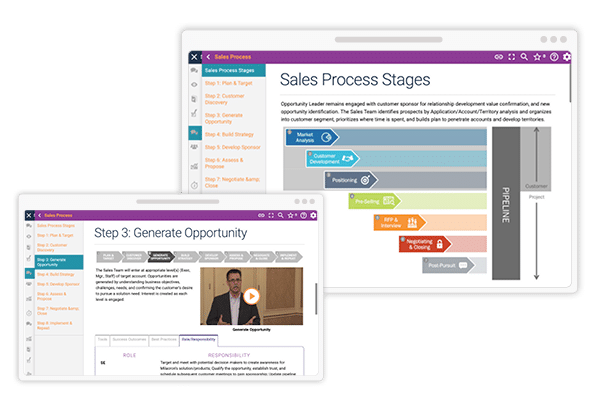Sales Process Training

A Sales Process Training Aligned to the Customer Journey
Many organizations rely on their own internal definition of what the sales process should look like. But if your sales, marketing, and customer success teams aren’t following a consistent, team-based sales process that aligns to your buyers’ behaviors and motivations, miscommunications and dropped handoffs can cost you customers.
When you understand how your buyers frame value and make decisions in the Customer Deciding Journey, you can design and implement customer acquisition and customer expansion processes that bring clarity and focus to all your commercial teams.
Why Do Organizations Need a Sales Process?
- Faster sales cycles through disciplined opportunity management at each stage.
- Stronger pipeline through proactive outreach and qualification.
- Higher close rates through smarter late-stage closing activities.
- Pipeline visibility and forecast accuracy based on buyer’s behaviors and decisions.
- Account expansion through effective renewal and upsell strategies.
- Team-based selling that connects every commercial function.
Three Levels of Planning That Turn
Sales Process into Sales Results
Territory Strategy
How to maximize activity in a region or set of named accounts
Account Strategy
How to sell wider and deeper in a named account
Opportunity Strategy
How to navigate and win a specific opportunity
A Playbook Approach to Sales Process Enablement
Account Development Process
Renewal and cross-sell plays
Team roles across all commercial functions
Internal and customer-facing planning cadence
Account planning tools
Customer business review tools
Reports and dashboards in CRM


Opportunity Management Process
Stages aligned to the Customer Deciding Journey
Team roles across all commercial functions
Opportunity strategy template
Territory planning template
Pipeline and forecast standards
Reports and dashboards in CRM
Sales Conversation Skills Mapped to Your Process
Customer Acquisition
A repeatable sales process provides your sellers with the tools and frameworks they need to have more consistent conversations with prospects. And when combined with science-backed customer acquisition skills training, you’ll enable your sellers to articulate value effectively, build more pipeline, and close more deals.
Customer Expansion
The vast majority of company revenue comes from existing customers. So it’s imperative that your sellers and customer success managers have a solid process in place to guide renewal and expansion conversations. When combined with science-backed customer expansion skills training, you’ll enable your teams to reduce churn and increase your profitability.
Sales Process Training Solutions
Only with Corporate Visions’ sales process solutions can you rapidly build a selling system that enables effective opportunity pursuit, pipeline visibility, forecast accuracy, and consistent execution across your commercial teams. Your sales process playbook becomes the foundation for effective sales training and skills reinforcement in your sales organization. And core sales disciplines, planning tools, and skills are reinforced through just-in-time learning within your CRM system, deal coaching, and certification.





